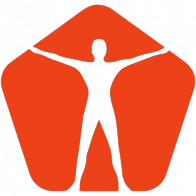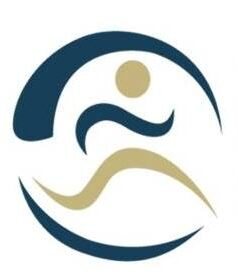Lower Back Pain - Do's and Don'ts
List for a Healthier Lifestyle
Low back pain, or lumbago as it is known in medical terms, is a general term used to describe any type of pain that occurs in the lower back region. It is a common health issue that affects approximately 80% of adults and leads to significant loss of work productivity. Low back pain can manifest as a sharp, sudden pain or as a dull, mild ache.
What is Low Back Pain?


What are the Causes of Low Back Pain?
Strain of the back: Overstretching or tearing of muscles or ligaments in the back.
Nerve irritation: Inflammation or compression of nerves, often leading to pain or numbness.
Lumbar radiculopathy: A condition where a nerve in the lower back is pinched or irritated, causing pain that radiates to the legs.
Bone compression: When bones press on nearby structures, such as nerves or muscles, causing discomfort or pain.
Bone and joint conditions: Disorders affecting the bones and joints, which can lead to pain and movement limitations.
Bone and joint damage: Injury or degeneration of bones and joints, leading to chronic pain or dysfunction.
Arthritis (Inflammation): Inflammation of the joints, which can lead to pain, stiffness, and swelling, commonly affecting the spine.
As mentioned above, most back pain is mechanical, meaning that the source of the pain can be triggered by movements of the spine and hips. The movable parts of the spine include ligaments, tendons, muscles, intervertebral discs, vertebral bodies, and facet joints. What does this mean? It means that most back pain issues can be resolved with well-planned, proper exercises and physical activities. In this article, we will focus more on what should and should not be done for back pain. Therefore, we won’t go into detail about the causes of back pain and will instead focus directly on the correct daily physical behaviors.
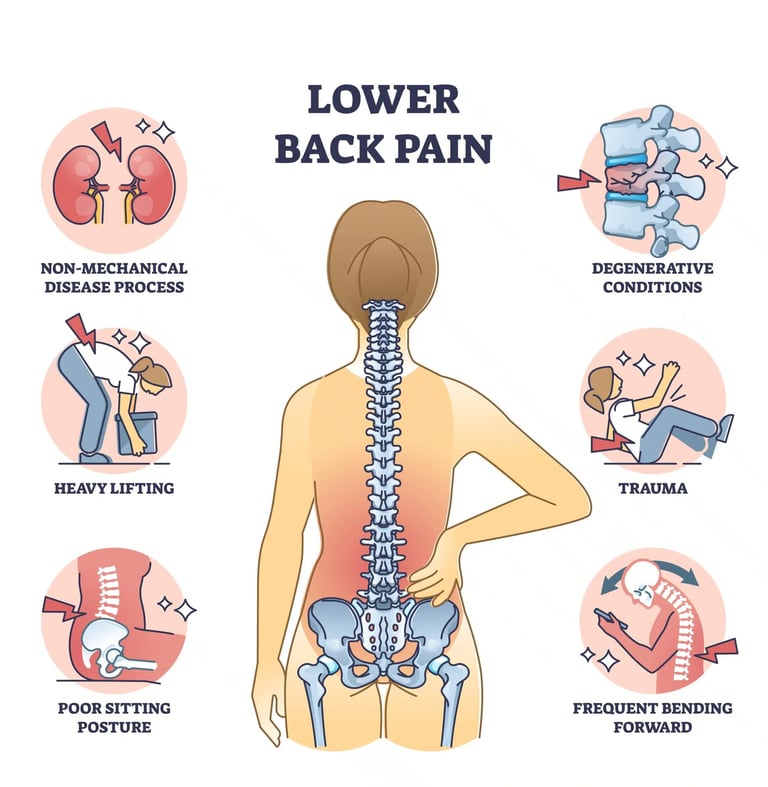

What to Do and What Not to Do!
Daily right and wrong behaviors
DO:
Sitting
Sit as little as possible. If your job involves sitting at a desk, take short breaks and try to walk or stretch for about 5 minutes.
Especially while sitting in the car, place a supportive rolled-up towel behind your lower back.
Always try to maintain the neutral curves of your spine.
Change your sitting position and posture at regular intervals.
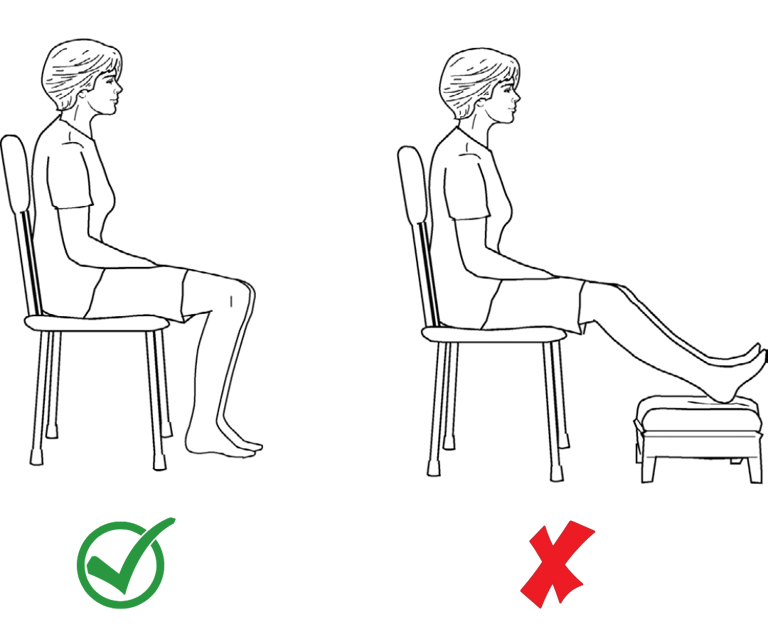

NOT DO:
Avoid sitting on a low, soft couch with a deep seat. It will force your hips to be lower than your knees, causing your back to round. This will result in the loss of your spine's natural curve, putting extra strain on your lower back.
Don’t place your legs straight out in front of you while sitting (as shown in the photo), as this posture is one of the most loading positions for your lower back. To relieve some of this load, try to sit with your feet comfortably flat on the floor when sitting in a chair.
DO:
Standing
If you need to stand for a long period, place one leg on a stool or something elevated.
Adjust your work heights according to your neck to avoid unnecessary strain.
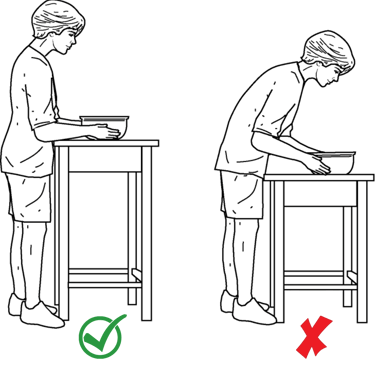

NOT DO:
Avoid bent positions.
DO:
Lifting
Use the correct lifting technique:
Keep your back straight while lifting.
Stand close to the load.
Ensure a firm surface and maintain a wide stance.
Squat down on one knee with your back straight. Grip the load firmly, and lift the weight by straightening your legs.
Perform the lift in a stable manner.
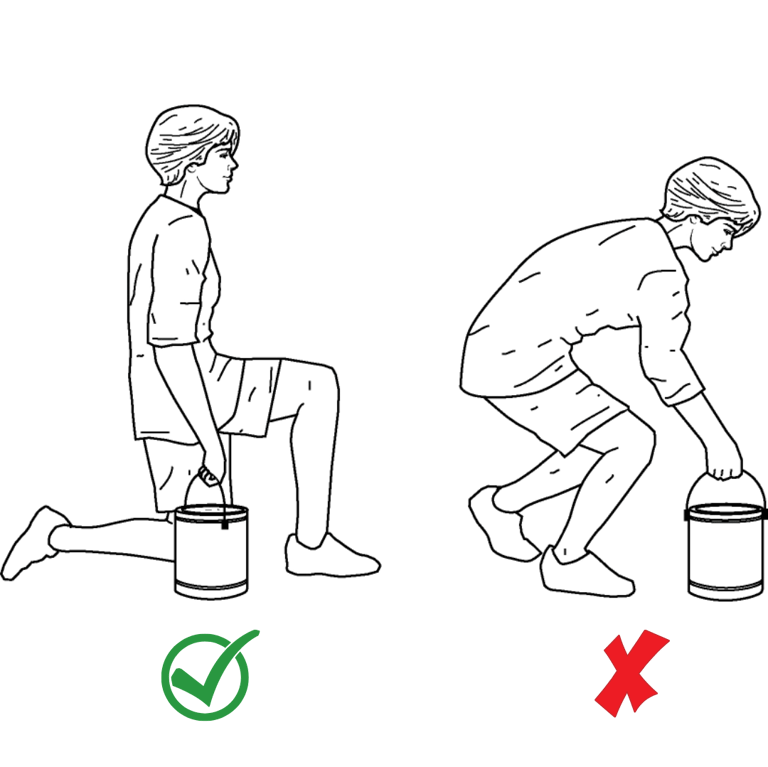

NOT DO:
Do not lean over the object you are lifting.
Avoid jerking or shaking while lifting.
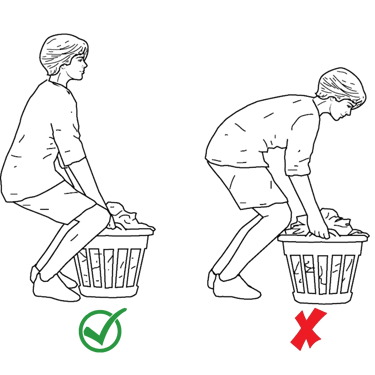

DO:
Lying down
Sleep on a good and firm surface.
If your mattress is sagging, use slats or plywood supports between the mattress and the base to reinforce it. Alternatively, you can place the mattress directly on the floor as a simple but temporary solution.
As shown in the photos, using a pillow for support can help you sleep more comfortably at night. This way, your spine remains in a healthier and safer position.
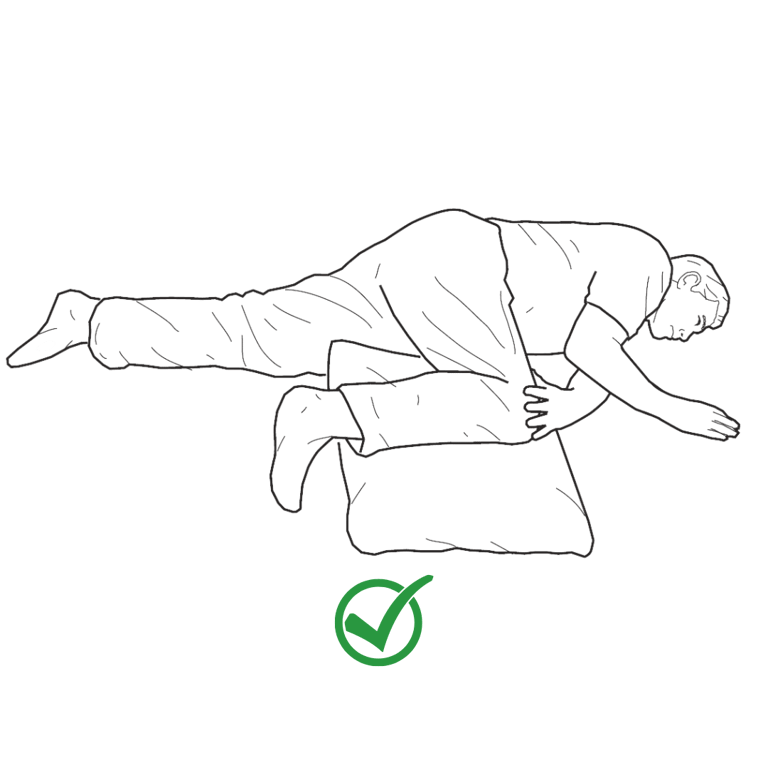

NOT DO:
Avoid sleeping on your stomach unless advised by your doctor or physiotherapist.

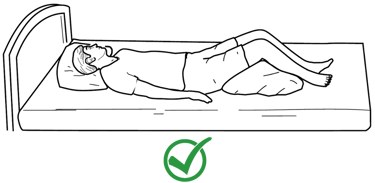
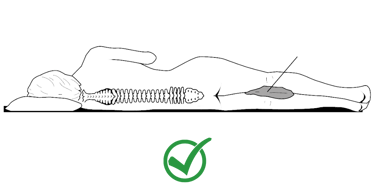

Pillow
DO:
Bending Forward
Try to maintain the natural curves of your back while performing daily activities such as making the bed, using the vacuum cleaner, mopping the floors, or removing weeds in the garden, etc.
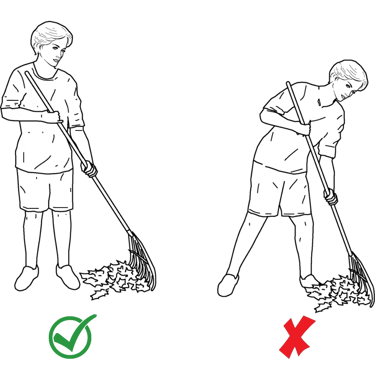

DO:
Driving
Drive as little as possible.
It's better to be a passenger than to drive yourself.
Move the seat closer to the steering wheel. The seat should be close enough to the steering wheel to maintain the natural curves of your back.
If your hips are lower than your knees in this position, sit on a cushion to elevate yourself.
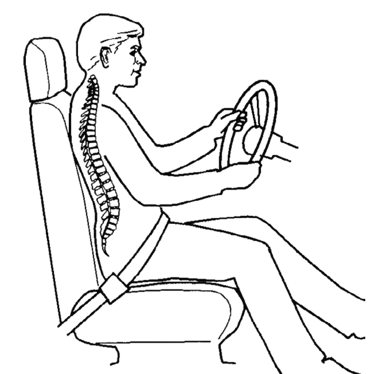


Lower Back Pain Exercise Guide
Safety Guidelines
An increase in back pain may occur with these exercises. This increase is acceptable as long as the leg symptoms do not worsen.
If your pain worsens or you experience new pain or symptoms while doing these exercises, stop and consult your doctor or physiotherapist about your symptoms.
If you notice any changes in bowel or bladder control, or if there is an increase in weakness in your legs or feet, stop the exercise immediately and contact your doctor or physiotherapist.
PRESS UPS:
LOWER BACK EXERCISES AT HOME
Try to release your back and hips while using your arms like in a traditional push-up to push yourself up. However, you should focus on keeping your hips low so that as you push up, extension occurs in your lower back (push your upper body as high as possible).
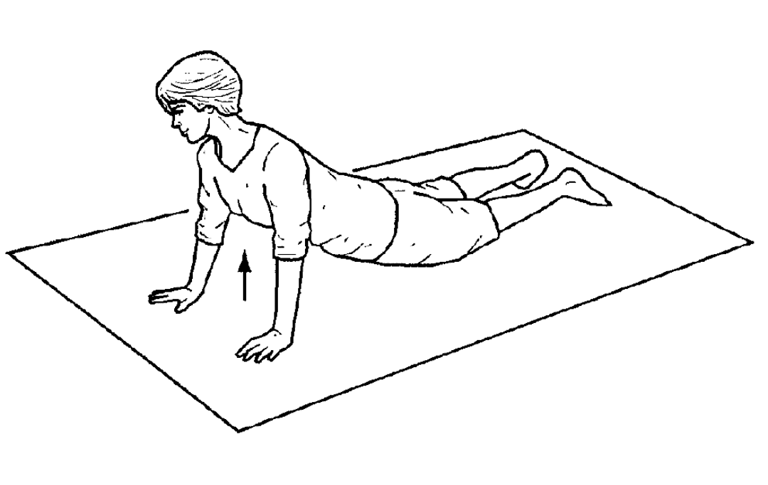

Stay in extension for 2-3 seconds then come down (5-10 repetitions)
DOUBLE KNEE TO CHEST:
Grab both of your knees with your hands and pull them towards your chest. You can hold this position for up to 1 second to stretch your lower back effectively. Allow your knees to gently release without fully letting go, then pull them back in again.
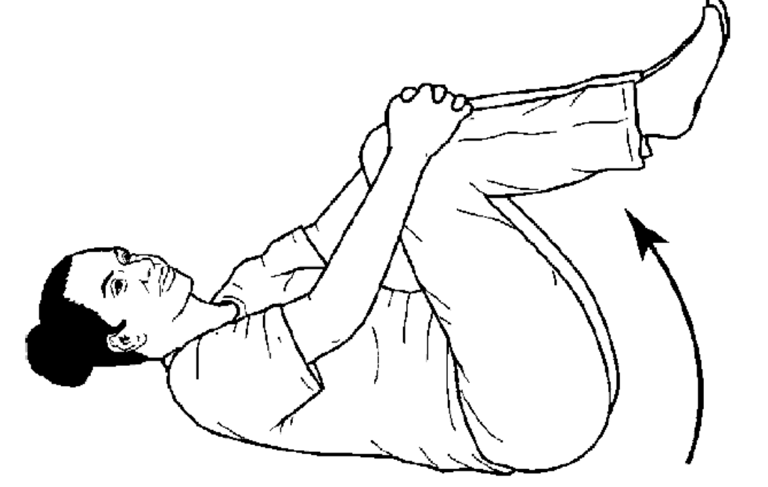

When you pull your knees towards your chest, make sure your hips lift a few centimeters off the ground (perform 10 reps).
SPINE LUMBAR TWIST STRETCH:
Lie on your back. Bring your knees into a tabletop position (if possible, with your knees and hips at a 90-degree angle). Rotate your knees to the sides and hold for a few seconds on each side. As you switch from one side to the other, keep your core engaged and ensure your lower back remains as neutral as possible.
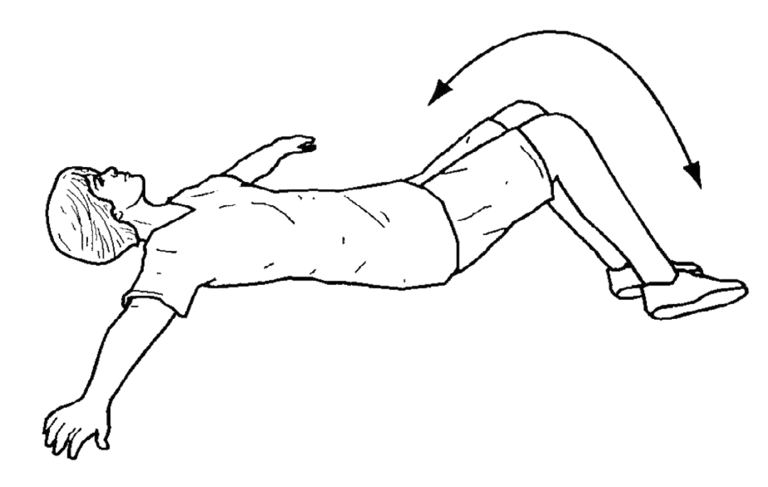

Hold your knees for 3-5 seconds on each side, then switch to the other side (5-10 repetitions).
SIDE-LYING POSITION STRETCH:
Lie on your side as shown in the photo, bending your legs at a 90-degree angle. Place both arms straight in front of you, one on top of the other, and look at your hands. With your gaze, rotate your top arm in a large circle counterclockwise. While rotating your arm, keep your legs in position and maintain contact with the floor with your bottom arm throughout the movement. The goal is to create a horizontal twist with your back and arm. Return comfortably to the starting position and repeat the movement.
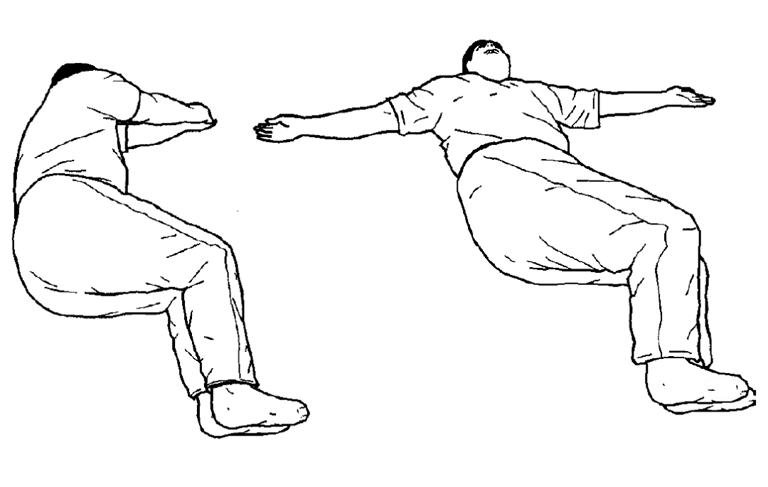

10 reps on each side
HAMSTRING STRETCH:
Lie on your back with your legs extended straight. Lift one leg up and support it by holding behind your leg with your hands (or use a towel or band if it's difficult). Slowly extend the lower leg upwards until you feel a stretch at the back of your upper leg.
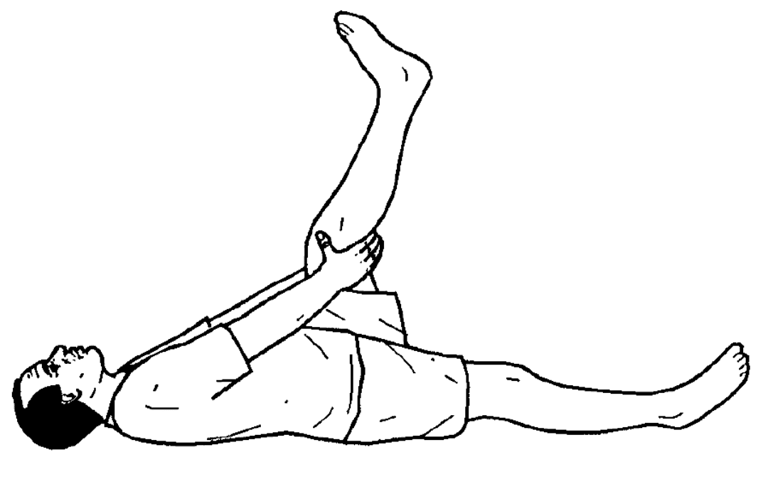

As you extend your leg, hold the stretch for 5 seconds when you reach your limit, then relax and repeat (10 reps for each leg).
STANDING ARCH:
Place your hands on your lower back with your feet apart and your toes pointing backward. Support your upper body with your hands and gently lean backward from your waist. Try to keep your knees straight during the movement.
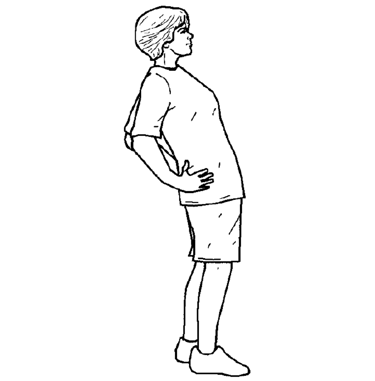

Hold your lower back for 5 seconds. Repeat 3 to 5 times
SIDE GLIDES:
Stand upright about two steps away from the wall and lean your shoulder against it. Keep your legs together and knees straight while moving your hips toward the wall. Return to the starting position and repeat.
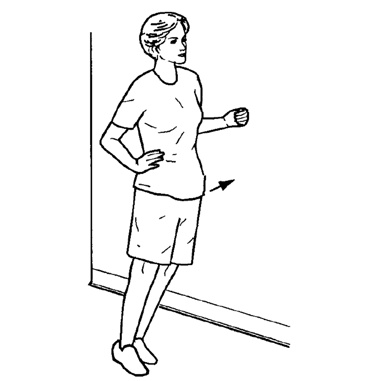

Keep your hips pressed against the wall for 3-5 seconds. Repeat 5-10 times

The medical information provided on this website should not be used as a substitute for consulting your doctor or other healthcare providers. You should always seek the advice of your doctor or another qualified healthcare professional before starting or stopping any treatment or if you have any questions regarding a medical condition. We are not responsible for any injuries or damages that may result from discontinuing medical treatment or not receiving treatment.





